Marcel de Korte
Data-augmented cross-lingual synthesis in a teacher-student framework
Mar 31, 2022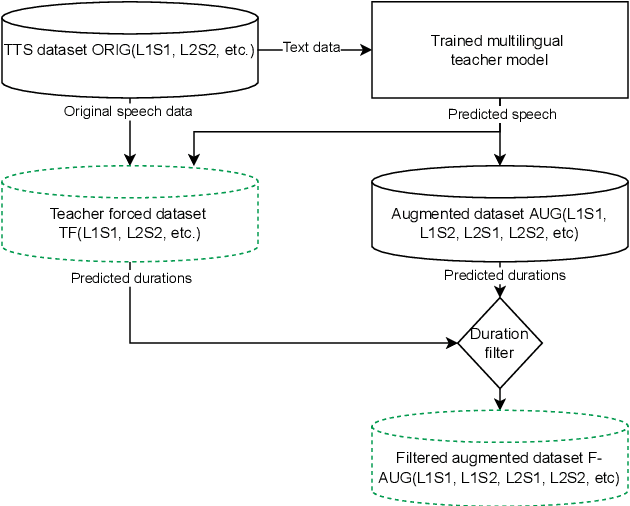
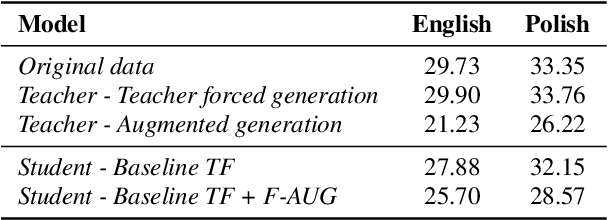


Abstract:Cross-lingual synthesis can be defined as the task of letting a speaker generate fluent synthetic speech in another language. This is a challenging task, and resulting speech can suffer from reduced naturalness, accented speech, and/or loss of essential voice characteristics. Previous research shows that many models appear to have insufficient generalization capabilities to perform well on every of these cross-lingual aspects. To overcome these generalization problems, we propose to apply the teacher-student paradigm to cross-lingual synthesis. While a teacher model is commonly used to produce teacher forced data, we propose to also use it to produce augmented data of unseen speaker-language pairs, where the aim is to retain essential speaker characteristics. Both sets of data are then used for student model training, which is trained to retain the naturalness and prosodic variation present in the teacher forced data, while learning the speaker identity from the augmented data. Some modifications to the student model are proposed to make the separation of teacher forced and augmented data more straightforward. Results show that the proposed approach improves the retention of speaker characteristics in the speech, while managing to retain high levels of naturalness and prosodic variation.
Efficient neural speech synthesis for low-resource languages through multilingual modeling
Aug 20, 2020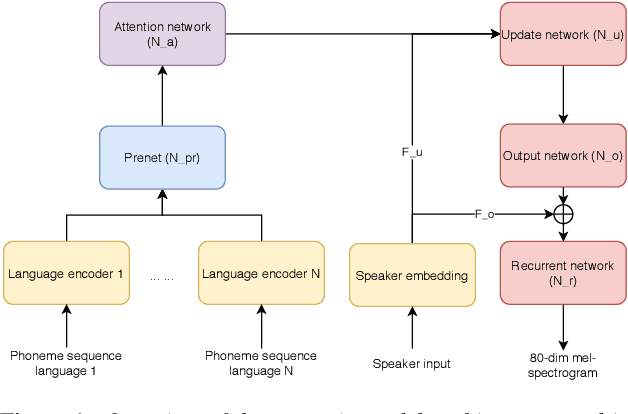
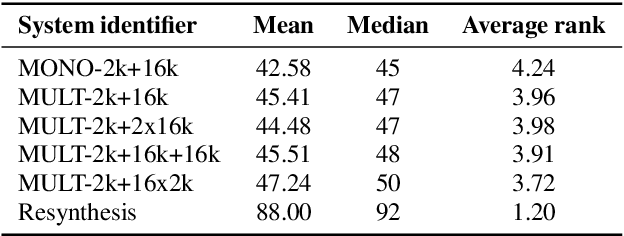
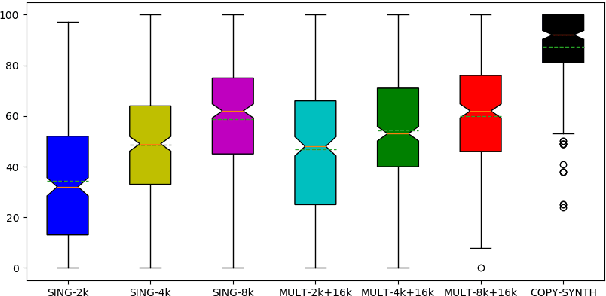
Abstract:Recent advances in neural TTS have led to models that can produce high-quality synthetic speech. However, these models typically require large amounts of training data, which can make it costly to produce a new voice with the desired quality. Although multi-speaker modeling can reduce the data requirements necessary for a new voice, this approach is usually not viable for many low-resource languages for which abundant multi-speaker data is not available. In this paper, we therefore investigated to what extent multilingual multi-speaker modeling can be an alternative to monolingual multi-speaker modeling, and explored how data from foreign languages may best be combined with low-resource language data. We found that multilingual modeling can increase the naturalness of low-resource language speech, showed that multilingual models can produce speech with a naturalness comparable to monolingual multi-speaker models, and saw that the target language naturalness was affected by the strategy used to add foreign language data.
 Add to Chrome
Add to Chrome Add to Firefox
Add to Firefox Add to Edge
Add to Edge